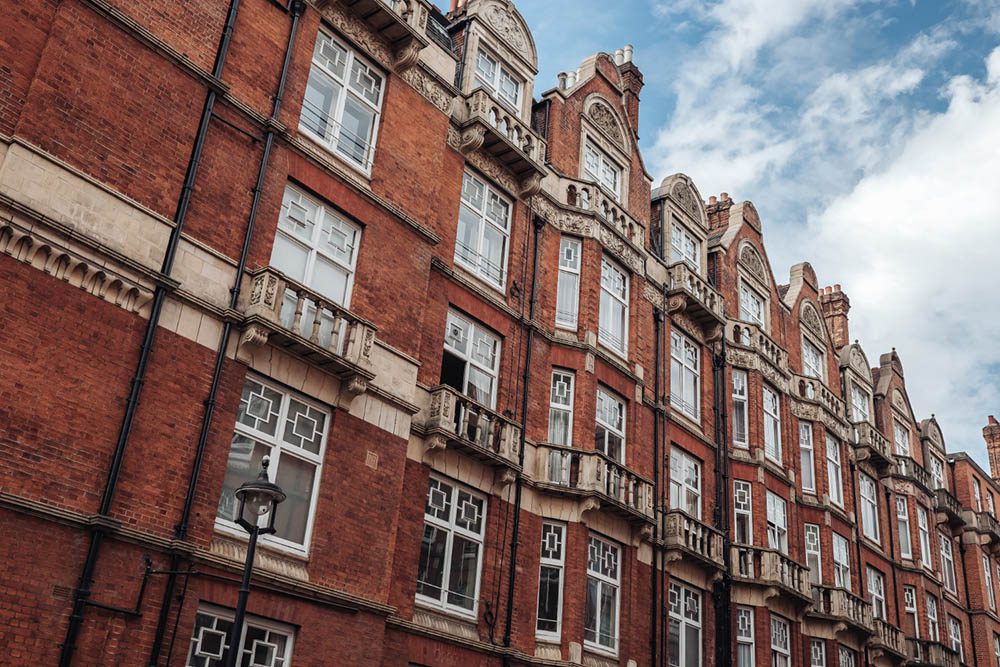“Can you put double glazing in a Grade 2 Property?” – This is a common question that arises when considering energy-efficient upgrades for these historically significant buildings. Grade 2 listed properties hold immense cultural value, and balancing preservation with sustainability is of paramount importance. In this blog post, we delve into the complexities surrounding the installation of double glazing in Grade 2 listed buildings. We will explore the challenges, potential solutions, and alternative approaches to enhance energy efficiency without compromising the building’s historical integrity. Join us as we navigate through the intricate landscape of preserving our heritage while striving for a greener and more sustainable future.
Understanding the Importance of Grade 2 Listed Buildings
“Grade 2 listed buildings” encompass a diverse range of architectural gems that hold significant historical, cultural, and architectural value. These buildings are protected by law due to their special interest and contribution to the nation’s heritage. Understanding their importance is crucial when considering energy-efficient upgrades and modifications.
What are Grade 2 Listed Buildings?
Grade 2 listed buildings are structures that have been officially recognised and designated as having special architectural or historic interest by the relevant authorities. These buildings can include a wide array of properties, such as houses, churches, public buildings, and industrial sites, among others. The listing places them on the National Heritage List for England https://historicengland.org.uk/listing/the-list/ (or equivalent lists in other regions of the UK), ensuring their conservation and protection for future generations.
The Historical Significance of Grade 2 Listed Buildings
Each Grade 2 listed building carries a unique historical narrative, reflecting the architectural styles, craftsmanship, and societal context of its era. These properties often have historical associations with notable individuals, events, or communities that have left an indelible mark on the nation’s cultural heritage.
Preserving Grade 2 listed buildings serves as a tangible link to our past, offering insights into the evolution of architecture and the lives of our ancestors. They contribute to the character and identity of local communities, providing a sense of continuity and pride in the shared history of the region.
The Need for Preservation and Conservation
The conservation of Grade 2 listed buildings is not merely about maintaining bricks and mortar; it is a commitment to safeguarding our collective memory and heritage. As living symbols of the past, these buildings enrich our present and shape our future.
However, preservation does not imply immobility or resistance to change. On the contrary, it entails striking a delicate balance between safeguarding historical features and ensuring buildings remain relevant and functional in the contemporary world.
Addressing Energy Efficiency Concerns
While preserving the historical integrity of Grade 2 listed buildings is paramount, addressing energy efficiency concerns is equally crucial in today’s environmentally conscious landscape. The energy performance of older buildings, particularly those with single-glazed windows and inadequate insulation, can be significantly improved to reduce carbon emissions and energy costs.
Approaching energy efficiency in these buildings requires careful consideration and respect for their unique characteristics. Sustainable upgrades should aim to minimise the environmental impact while preserving the authenticity and charm that defines these historical landmarks.
In the subsequent sections, we will explore the challenges and possibilities of enhancing energy efficiency in Grade 2 listed buildings. By embracing innovation and sensitivity to heritage, we can embark on a journey towards a greener future without compromising the invaluable treasures of our past.
The Challenges of Installing Double Glazing in Grade 2 Listed Buildings
Enhancing energy efficiency in Grade 2 listed buildings is a commendable goal, but it comes with unique challenges, especially when it comes to installing double glazing. Let’s explore the reasons why double glazing is a concern in these listed properties and the limitations posed by conservation regulations and heritage preservation guidelines.
Concerns with Double Glazing
Double glazing, which involves adding an extra layer of glass to windows, is a widely recognized method for improving a building’s thermal performance and reducing heat loss. However, in the context of Grade 2 listed buildings, this seemingly straightforward solution raises significant concerns.
Preserving Historical Authenticity
One of the primary concerns with double glazing in listed properties is the potential impact on the building’s historical authenticity. Many Grade 2 listed buildings boast original windows that are integral to their architectural significance. These windows may exhibit distinctive design elements, period-specific craftsmanship, and even unique materials that contribute to the building’s character and historical value.
Replacing original windows with modern double glazing could diminish the building’s authenticity and erase an essential part of its history. Preservationists and conservation experts advocate for retaining these windows whenever possible.
Limitations Imposed by Conservation Regulations
Grade 2 listed buildings are subject to strict conservation regulations and heritage preservation guidelines. These regulations aim to protect the architectural and historical features that make these properties special. As a result, any modifications or alterations must be carefully assessed to ensure they do not compromise the building’s significance.
Conservation officers and local planning authorities carefully scrutinise proposals for double glazing installations in listed buildings. They weigh the potential benefits of enhanced energy efficiency against the preservation of historical integrity.
Striking a Balance
Preserving Grade 2 listed buildings requires striking a delicate balance between conservation and modernization. While energy efficiency is crucial for environmental reasons, it must be achieved in harmony with the building’s historical fabric.
This balance can be challenging to achieve, as double glazing typically involves alterations to the window frames, which may impact the building’s appearance and authenticity. As a result, many conservation authorities prioritise preserving original windows or exploring alternative solutions that are less obtrusive.
Exploring Alternatives
In light of the challenges posed by double glazing, listed building owners and conservation professionals often explore alternative solutions. One such option is secondary glazing, which involves fitting an additional slim, discreet window pane on the interior side of the existing window. This approach can offer improved energy efficiency without altering the external appearance of the building. However, this solution is the least visually appealing and can affect the operation of the windows, making them harder to open and close.
Conclusion
Installing double glazing in Grade 2 listed buildings presents a complex dilemma between energy efficiency and historical preservation. The need to maintain the authenticity of the building’s windows, combined with strict conservation regulations, makes this undertaking a careful and nuanced process. In the next section, we will delve into the consultation process and the importance of seeking expert advice when considering energy-efficient upgrades for these cherished heritage buildings.
Slim-Profile Double Glazing as a Potential Solution
Slim-profile double glazing is an innovative approach to enhancing energy efficiency in Grade 2 listed buildings while preserving their authentic appearance. This solution aims to replicate the charm of original windows while offering improved thermal performance, striking a delicate balance between sustainability and heritage preservation.
Introducing Slim-Profile Double Glazing
Slim-profile double glazing involves fitting double glazed units with slim sightlines that closely resemble the appearance of original single-glazed windows. By utilising advanced materials and technologies, this solution minimises the visual impact of the glazing while maximising energy efficiency.
Benefits of Slim-Profile Double Glazing
Preservation of Authentic Appearance
Slim-profile double glazing allows Grade 2 listed buildings to maintain their historical charm, as the windows closely resemble the original design, preserving the property’s character and architectural integrity.
Enhanced Energy Efficiency
Despite their slim design, these double glazed units provide superior insulation compared to single-glazed windows, reducing heat loss and improving thermal performance.
Compliance with Conservation Standards
The unobtrusive nature of slim-profile double glazing often aligns with strict conservation regulations, making it a more favorable option for gaining the necessary approvals.
Types of Slimline Double Glazing and Their Pros and Cons
Vacuum Double Glazing
Vacuum double glazing consists of two glass panes separated by a vacuum, providing exceptional insulation properties. The absence of air between the panes reduces heat transfer, resulting in higher energy efficiency. Pros of vacuum double glazing include its outstanding thermal performance and minimal sightlines. However, it is a relatively new technology, and costs may be slightly higher than other options, but as adoption increases the costs should come down over time, and the initial investment is offset by the savings on energy bills.
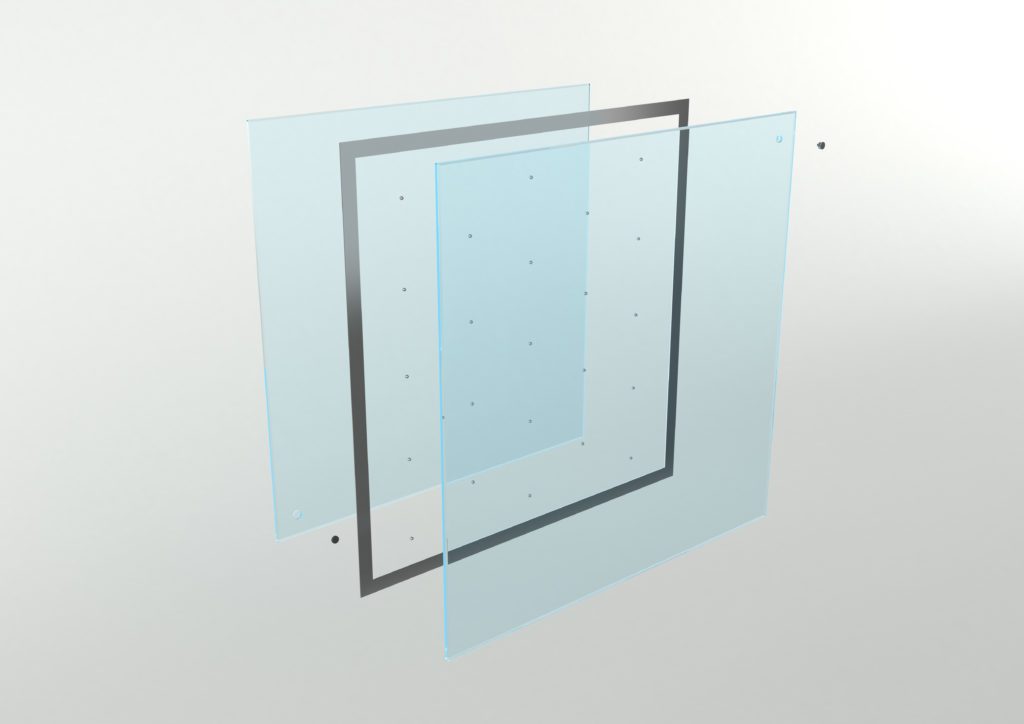
Slimline Standard Double Glazing:
Slimline standard double glazing incorporates narrower spacer bars and slim glass panes to achieve a desired aesthetic appearance. While it does provide better energy efficiency compared to single glazing, its performance might not match that of vacuum glazing. The significant drawback of slimline standard double glazing lies in its potential unreliability due to the propensity of the seals within the units to fail at an alarming rate. The reduced amount of sealing material used in these units contributes to their weaker structure, leading to higher rates of failure and decreased longevity compared to more advanced options like vacuum glazing.
Super-Thin Spacers:
Super-thin spacers, often made of warm edge technology materials, are used in slim-profile double glazing to separate the glass panes. These spacers are more discreet than traditional spacers, allowing for narrower sightlines. The pros of super-thin spacers include improved aesthetics and reduced risk of condensation. However, they may not provide the same level of thermal insulation as vacuum double glazing.
Why Standard Double Glazing is Not Usually Permitted
Standard double glazing is typically not permitted in Grade 2 listed buildings due to its thicker sightlines, double reflection and potential to alter the building’s appearance significantly. The stark difference between modern double glazing and original single-glazed windows can compromise the building’s historical integrity, leading to conservation authorities often favouring more discreet solutions like slim-profile double glazing.
Conclusion
Slim-profile double glazing offers a promising solution for improving energy efficiency in Grade 2 listed buildings without compromising their authentic appearance. With various options available, including vacuum double glazing, it provides an opportunity to strike the right balance between sustainability and preservation. While standard double glazing is not usually permitted, the use of slim-profile alternatives enables property owners to embrace modern advancements while respecting the cultural heritage of these cherished historical buildings.
Balancing Energy Efficiency and Heritage Conservation
Finding a delicate balance between energy efficiency goals and the preservation of historical features is crucial when considering upgrades for Grade 2 listed buildings. While it is essential to maintain the authenticity and charm of these historical landmarks, embracing energy-efficient improvements is equally vital to combat global warming and address modern-day challenges faced by homeowners.
Preserving Historical Features
Grade 2 listed buildings hold significant cultural value, and their preservation is of utmost importance. Historical features such as original windows, unique architectural elements, and period-specific designs provide a tangible connection to our past. By safeguarding these features, we ensure that future generations can appreciate the rich history and heritage that these buildings embody.
Embracing Energy-Efficient Upgrades
Although preserving historical features is essential, it is equally crucial to address the energy performance of older, inefficient buildings. Energy-efficient upgrades play a pivotal role in combating global warming and reducing carbon footprints, aligning with our collective responsibility to protect the environment.
Combating Global Warming
Grade 2 listed buildings are often less energy-efficient due to the use of single-glazed windows and inadequate insulation. Upgrading to energy-efficient solutions, such as slim-profile double glazing or vacuum glazing, helps minimize heat loss and reduces the building’s energy demand. By adopting greener practices, these historical buildings can become more sustainable, contributing to broader efforts in combatting climate change.
Advantages to Homeowners
Embracing energy-efficient upgrades brings multiple advantages to homeowners, particularly in the current situation of rising energy bills and living costs. Improved insulation and reduced heat loss translate to lower energy consumption, leading to reduced utility bills and long-term savings. Furthermore, energy-efficient upgrades increase the overall comfort of living spaces, providing a cozier and more pleasant environment for occupants.
Contributing to a Greener Future
By striking a balance between energy efficiency and heritage preservation, we not only honour our past but also contribute to a greener future. Energy-efficient Grade 2 listed buildings set an example for sustainable practices, inspiring others to follow suit. As we transition toward a more eco-friendly society, these historical treasures can serve as beacons of sustainable living, showcasing that heritage and environmental consciousness can harmoniously coexist.
Conclusion
Balancing energy efficiency goals with the preservation of historical features is a critical undertaking in Grade 2 listed buildings. While honouring the authenticity of these treasured landmarks, we must also address the need for energy-efficient upgrades to combat global warming and reduce the burden of high energy bills on homeowners. By seeking sustainable solutions, we not only secure the heritage of the past but also pave the way for a more sustainable and environmentally conscious future.
Success Stories and Case Studies
The success of Grade 2 listed buildings in implementing energy-efficient solutions while preserving their historical value is exemplified by the remarkable case study of Mews House in West London. This Victorian listed mews property underwent a transformative retrofit project that achieved a harmonious blend of ‘deep sustainability’ and building conservation, showcasing the potential of heritage windows in enhancing energy efficiency.
The Retrofit of Mews House
Originally constructed in 1878 as a traditional carriage house, Mews House had undergone various conversions over the years, resulting in poorly heated and inadequately laid out rooms. Architects Prewett Bizley embarked on a project to remodel the interior, creating a light-filled open-plan living space while preserving the building’s historic features. Their goal was to drastically reduce the carbon footprint of this 19th-century property, exceeding the energy efficiency of a newly built home.
Importance of Winston Sliding Sash Windows
The replacement of existing single-glazed windows with Gowercroft’s heritage windows – the Winston Sliding Sash – played a central role in achieving the sustainability and conservation objectives of the project. The architect sought higher performance levels, including superior thermal efficiency and an aesthetically authentic appearance to secure planning permission.
The Winston Sliding Sash windows, made with vacuum glazing only 7mm thick, offered excellent thermal performance (U value of 1.5 W/m²K), outperforming conventional double glazing. The slim Accoya® frames, painted white and coated with a protective system, featured traditional joinery elements, including glazing bars, fitch fasteners, pulleys, sash limiters, concealed gaskets, and period ironware, all contributing to the authentic appearance.
Find out more about Winston Heritage Sliding Sash Windows here.
Energy Efficiency Achievements
The energy efficiency improvements were outstanding, with vacuum glazing and Gowercroft’s excellent sealing system contributing to impressive air tightness (close to 1 m³/m²hr at 50Pa). As a result, Mews House achieved an extraordinary 82% measured reduction in overall energy consumption, decreasing from 325 to 51 kWhr/m²yr. Remarkably, the current measured energy use is lower than the 2025 RIBA targets for new build houses.
Balancing Sustainability and Conservation
The success of Mews House showcases how sustainable energy-efficient upgrades, like vacuum glazing and slim-profile double glazing, can be seamlessly integrated into Grade 2 listed buildings without compromising their historical significance. The project stands as a landmark example of heritage retrofit, demonstrating that with careful planning and thoughtful choices, it is possible to achieve energy efficiency and conservation goals in harmony, creating a greener future while preserving the architectural treasures of our past.
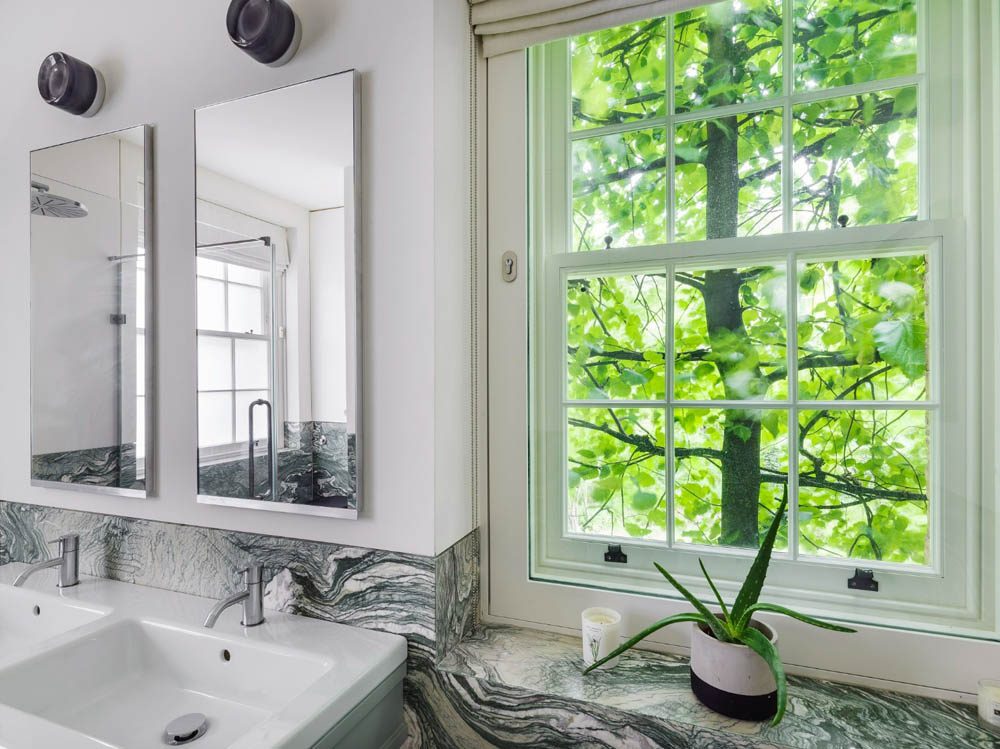
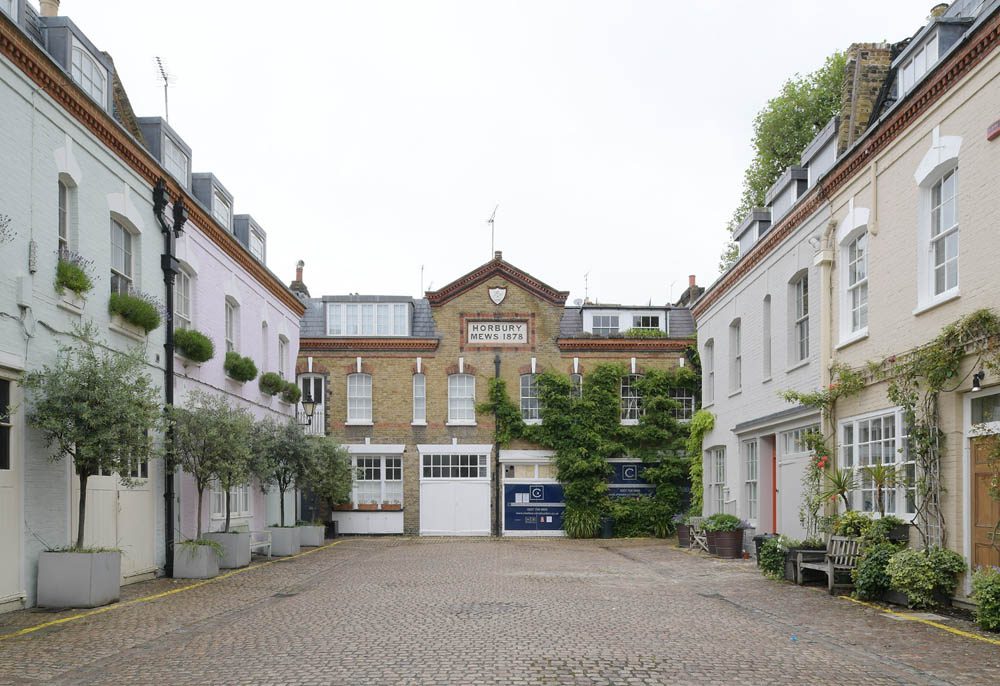
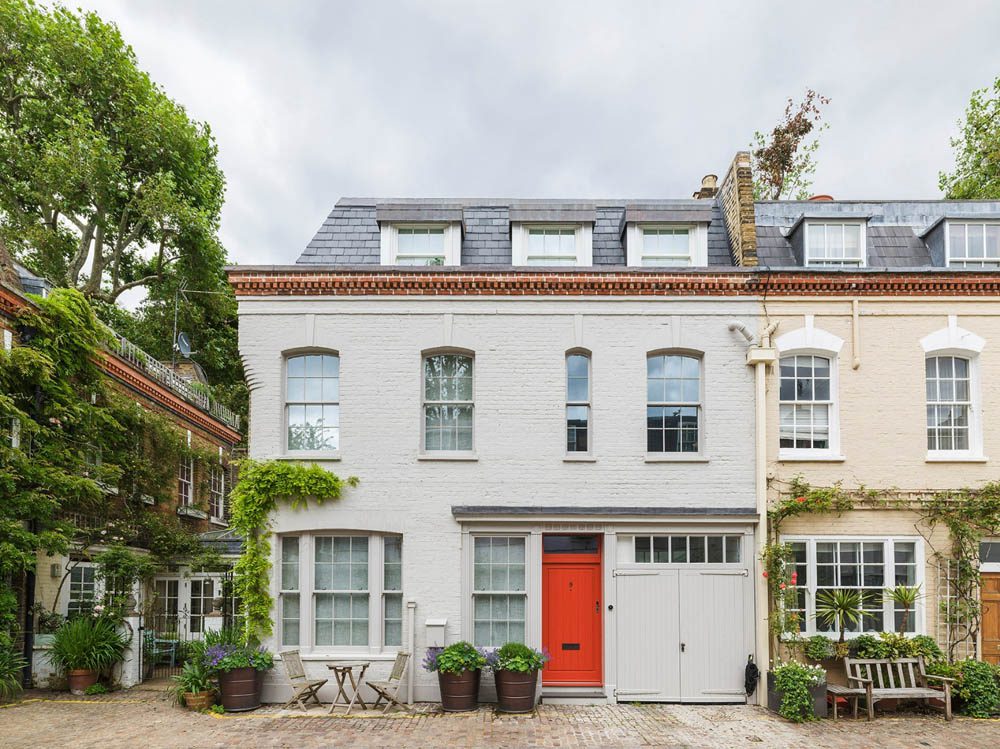
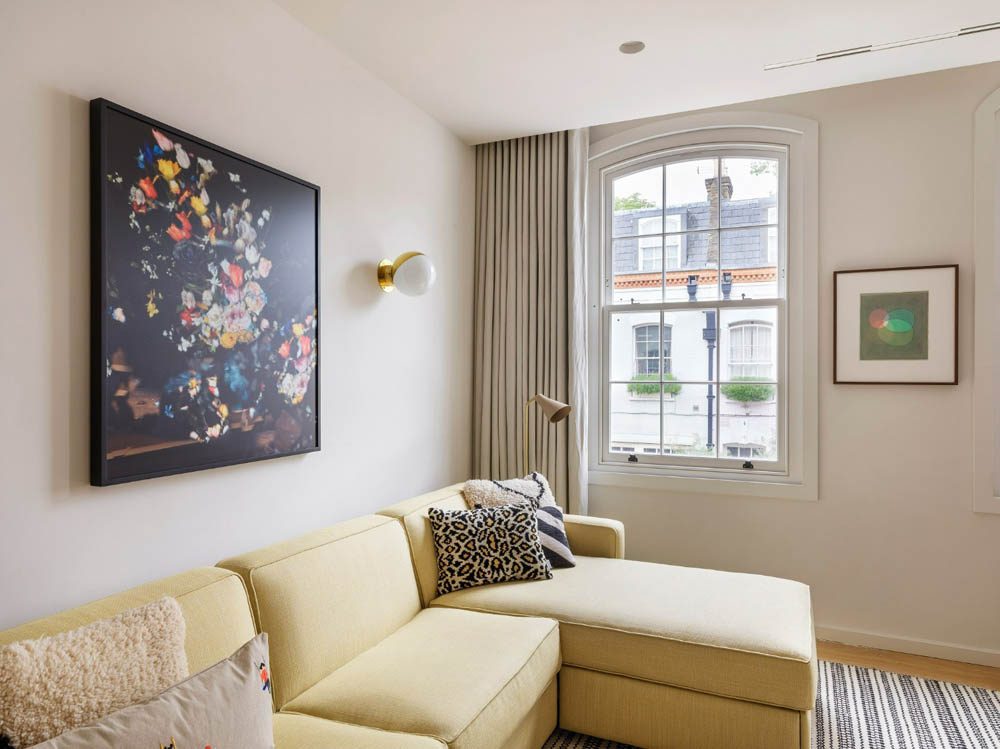
Conclusion
The journey towards enhancing energy efficiency in Grade 2 listed buildings is a complex and rewarding endeavour. Throughout this blog post, we explored the challenges, potential solutions, and the importance of striking a balance between energy efficiency goals and the preservation of historical features.
As custodians of our cultural heritage, we have a responsibility to safeguard Grade 2 listed buildings, cherishing their unique character and historical significance. Yet, we cannot overlook the pressing need to address energy inefficiencies and combat global warming. Finding innovative and sensitive solutions, such as slim-profile double glazing and vacuum glazing, offers a path to achieve both sustainability and heritage preservation.
The success story of Mews House exemplifies the transformative power of energy-efficient upgrades, showcasing how deep sustainability and building conservation can harmoniously coexist. Through careful retrofitting and the use of high-performance heritage windows, the energy consumption of this Victorian property was significantly reduced, setting an example for a greener and more sustainable future.
As we embark on the journey to enhance energy efficiency in Grade 2 listed buildings, let us remember that each step forward is an opportunity to preserve our cultural legacy and contribute to a greener world. By seeking expert advice, navigating the permissions process diligently, and exploring innovative solutions, we can ensure that these architectural treasures continue to inspire awe for generations to come.
Ultimately, by honouring the past while embracing the future, we demonstrate that energy efficiency and heritage conservation can walk hand in hand, creating a harmonious balance that celebrates our history while shaping a brighter, sustainable, and more environmentally-conscious tomorrow. Together, let us strive for a greener future, where the beauty of our architectural heritage and the urgency of energy efficiency unite to leave a lasting legacy for the generations yet to come.
Yes, you can put double glazing in a Grade 2 Property. However, it is essential to navigate the process carefully. Grade 2 listed buildings require special consideration due to their historical significance. Conservation regulations and heritage preservation guidelines must be followed to ensure that any modifications, including double glazing, maintain the building’s authentic character and comply with conservation standards. Alternative solutions such as slim-profile double glazing or secondary glazing might be more suitable options to improve energy efficiency without compromising the building’s historical integrity. Consulting with conservation experts and local authorities is crucial before undertaking any modifications in a Grade 2 listed property.

